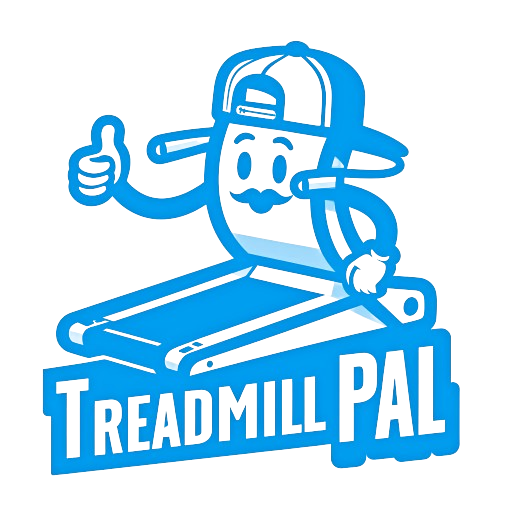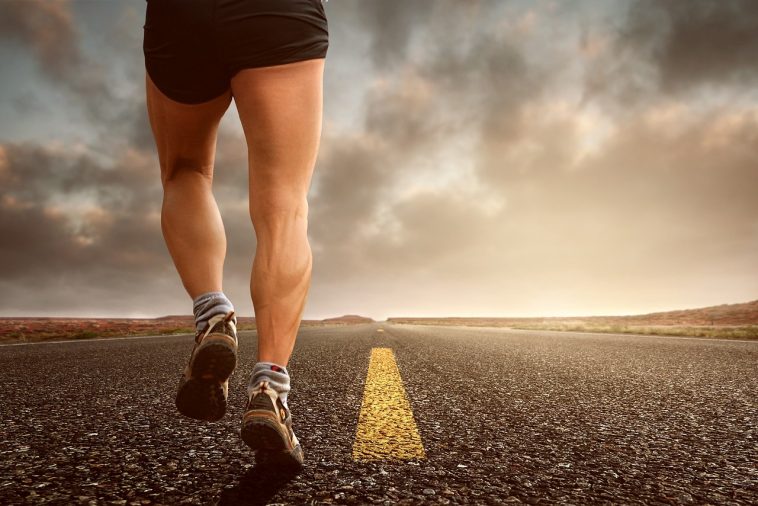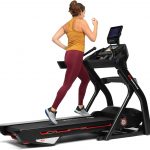Hello Friends, Do you want to feel the wind in your hair and the earth beneath your feet… while conveniently staying indoors? Running barefoot on treadmill might tickle your fancy!Although jogging barefoot on a treadmill is a handy form of exercise, there are a few things to keep in mind, First, safety: Because the belt doesn’t overheat, short, moderate sprints (less than 35 to 40 minutes) are usually safe. However, because of the accumulation of heat, long runs can cause pain or even burns.
While barefoot running continues to gain popularity, its applicability is frequently restricted by real-world situations. Treadmills fill that need by providing a secure and regulated environment for this well-liked trend. But before you give up shoes, keep this in mind:
- Modify Your Form: Running in shoes is not the same as running barefoot. Try modifying your form to improve your proprioception and balance. Getting advice from a qualified instructor can help you maximize your barefoot technique.
- Determine Your Suitability: Running barefoot isn’t for everyone. Before getting started, things like skill level, shoe conditions, and personal preference should be taken into account.
- Be Aware of the Heat: Over time, treadmill belts have a tendency to warm up. Although short, easy runs are usually safe to do on your bare feet, longer runs may cause pain or burns.
Unlike jogging in shoes, barefoot running calls for modifications. To prevent injury, put your attention on proper posture, a natural gait, and a central location on the belt. Never be afraid to seek expert advice for individualized form guidance.
Make sure your treadmill has sufficient space for running and sufficient cushioning to be used barefoot. For stability, stay in the middle of the deck and stay away from the edges.
Discomfort is a warning sign! If running on the treadmill in your bare feet becomes unpleasant, stop right once and see a doctor to rule out any possible problems.
Is Running Barefoot On A Treadmill Risky?
The appeal of running barefoot has spread to treadmills, luring many people to try it out for possible health advantages. To help you make an informed choice, let’s examine the advantages and disadvantages of keeping the shoes.
The Positive:
- Decreased Impact (Maybe): According to some theories, jogging barefoot lessens the impact on your joints, which may be advantageous for people who are worried about impact-related ailments. To support this assertion, further study is necessary, and it is important to see a doctor first.
- Increased Injury Risk: When there is insufficient cushioning, your feet are subjected to more impact, which raises the possibility of ailments like tendinitis, blisters, or calf muscle edema. It’s crucial to build tolerance gradually at first.
- Heat-Related Issues: Especially during extended runs, treadmill belts produce heat. Running barefoot across a heated belt can cause discomfort or even burns. Maintain brief sessions and keep an eye on the belt’s temperature.
- Foot Hazards: Cuts and punctures can result from invisible objects on the treadmill. Before going barefoot, make sure the belt is clean and your feet are injury-free.
It’s paramount to pay attention to how your body feels. If you experience any pain or discomfort, stop immediately and consult a healthcare professional. Barefoot running isn’t for everyone. Factors like experience level, foot conditions, and personal preference should be considered before diving in.
Benefit of Treadmill Running barefoot
Treadmills provide a safe space to investigate the barefoot movement, which has piqued the interest of many runners. One significant benefit of running barefoot on treadmill is? You don’t have to worry about the outdoors anymore. No more avoiding stones, recoiling from shattered glass, or struggling through filth and rubble. You may concentrate on the feelings and possible advantages of barefoot running with total peace of mind on a clean, regulated surface.However, why throw away the shoes? Now let’s explore the possible advantages:-
Body Awareness and Balance
Every barefoot stride on the treadmill turns into a posture and balance lesson. Your feet fully contact the ground when wearing shoes, which improves awareness and encourages a more natural posture and building muscles. The torso remains pleasantly supported while the feet actively participate in leg movement by flexing and expanding.
Your brain’s capacity to coordinate, balance, and find your groove is actually improved by this minimalist technique, which emphasizes muscular activation and reducing impact. Absence of shoes promotes a natural running gait, which may result in increased efficiency with fewer steps.
Barefoot treadmill running can be viewed as a kind of training ground for becoming a connected, efficient, and conscious runner.
Runs smoothly and effectively
Recall that using a treadmill while barefoot is a voyage rather than a race. You are more likely to fall on your forefoot and arches rather than your heels when you are not wearing shoes. Although this movement may seem strange at first, it really helps to lessen the strain on your heels and encourages a more effective running technique that involves fewer steps and a gently touchdown.
Using your front foot arches, which act as your body’s natural shock absorbers, is the key to the enchantment of barefoot running which eventually enhance strength endurance. Compared to conventional shoe-clad training, this can assist improve strength, endurance, and even lead to quicker runs with reduced oxygen use.
To discover the possible advantages of barefoot treadmill running, accept the process, pay attention to your body, and make a gradual shift!
Strengthening Muscles
Your feet and legs have to work harder to absorb the shock of each step if you don’t wear shoes. This extra effort improves general stability and may lower your risk of overuse problems by strengthening the muscles in your calves, ankles, feet, and even your core. According to research, running barefoot can stimulate the plantar fascia, a network of tissue on the foot’s sole that is essential for shock absorption and arch support. Running barefoot can also strengthen the Achilles tendon, which may lower the risk of tendinitis.
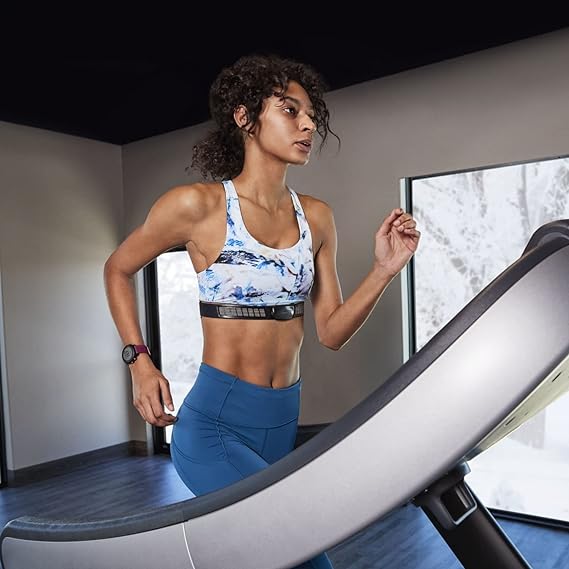
Improved Efficiency and Reduced Impact:
The absence of shoes can lead to a more natural running form, characterized by a shorter stride and a midfoot or forefoot strike. This can potentially lead to increased running efficiency and reduced impact on your joints, especially the knees and hips. Studies have shown that barefoot runners tend to take fewer steps per minute and exhibit lower impact forces compared to shod runners. However, it’s important to note that not everyone benefits from barefoot running, and transitioning gradually is crucial to avoid injury.
Cardiovascular Benefits:
By raising heart rate and oxygen consumption, barefoot running proponents assert that it can enhance cardiovascular health. Because barefoot running reduces cushioning and increases muscular activation, it may result in a more intense workout, however research on this particular topic is sparse. Before beginning any new fitness regimen, you should speak with your doctor, especially if you have any underlying medical issues.
Benefits for the Mind and Emotions:
Barefoot jogging may provide a sense of independence and a connection to nature in addition to its physical advantages. The sensation of the earth beneath your feet may be energizing and help you become more conscious. Furthermore, a number of people have reported feeling less stressed and anxious following barefoot jogging.
The Drawbacks Of Treadmill Running In Bare Feet
Although the advantages of barefoot treadmill running were discussed in the previous section, it’s important to have a balanced viewpoint by recognizing the drawbacks as well. The possible disadvantages to think about before giving up your shoes are broken down as follows:
My Feet Hurt, Too!
Injury Express: Your feet and joints absorb greater shock when you don’t have shoes on, which can result in blisters, calluses, stress fractures, and even tendonitis. Making a transition too hastily might backfire.
Form factor: jogging barefoot demands a different form than jogging in shoes. Incorrect form can make you more likely to get hurt, especially if you’re not getting instruction.
Central Discomfort:
Heatwave Treadmill: During longer runs, the treadmill belts may grow warm, which might cause unpleasant or agonizing burns on your bare feet.
Rough Ride: Although smooth, treadmill belts can nonetheless seem uneven when compared to natural surfaces, which could lead to rashes or even wounds.
Blister Bonanza: Friction from the belt can cause painful calluses and blisters, particularly on extended runs or when using incorrect technique.
Not Fit for Everybody:
Pre-Existing Conditions: Before contemplating barefoot running, anyone with pre-existing foot ailments or injuries should speak with a physician.
Maintain Good Hygiene: Make sure the treadmill belt is spotless to prevent the spread of undesired germs (think illnesses).
Restricted Terrain: While outside jogging can provide a more diverse terrain that is better for building total foot and ankle strength, treadmills only provide a controlled setting.
Injury of the foot and muscle
Although a treadmill’s flat, spotless surface would appear perfect for running barefoot, there are certain drawbacks to take into account:
Muscle Memory Monotony: Using the same muscle groups repeatedly while running on a level treadmill without adjusting the elevation, topography, or surface material might result in muscle memory monotonia. The belt shields your toes from objects, but it can’t replace the variety of stimuli that comes with jogging outside.
Heel Neglect and Tension: Running barefoot on a treadmill can draw attention away from your heels, which increases the risk of strained and stiff joints and ligaments in your feet’s bottoms. This is due to the fact that running barefoot stresses using the front of the foot for propulsion while ignoring the role your heels play in providing cushioning.
Injury Watch: You’re more prone to ailments like Achilles tendonitis, plantar fasciitis, and calf tendonitis if you don’t wear supportive shoes or activate your heel properly. These may arise as a result of the heightened strain placed on these tissues during barefoot running on the uneven surface of a treadmill.
Issues with treadmills
While it may sound tempting to run barefoot on a treadmill, there are a few unspoken risks to take into account. This is why giving up your shoes might not be as simple as it seems:
- The Belt Bites Back: The treadmill belt might seem more like it’s tossing you along, which could hurt your feet, as opposed to natural terrain where your toes engage and move you ahead.
- Baby Steps, Big Frustration: Using a treadmill may require you to take shorter, faster steps in order to prevent tripping over the belt or striking the edges, which may not be the best for your natural running gait.
- From Traction to Burns: Although the belt offers support, taking off your shoes exposes your toes to the heat produced by the treadmill’s surface, which might cause painful burns on your lower thighs.
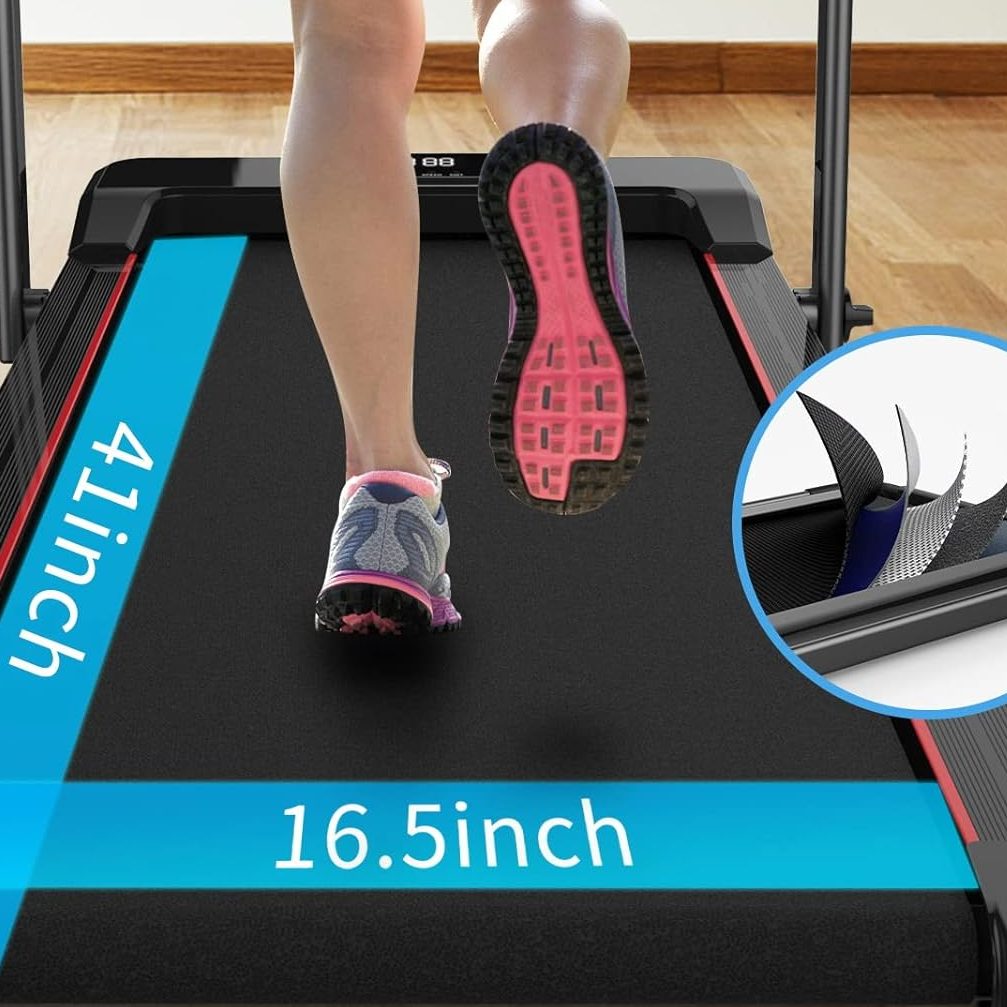
Prioritizing safety
- The motto is “Slow and Steady Wins the Race.” Increase the time and intensity gradually so that your body can get used to the increased demands.
- Pay Attention to Your Body: Your body uses pain as a warning signal when something is off. Stop right away if you feel uncomfortable.
- Clean and Smooth: To reduce the chance of cuts and discomfort, stay away from rough or unclean treadmills.
- Seek Advice: For assistance with correct form and safe barefoot running technique, speak with an expert.
- Doctor Knows Best: If you have any questions or concerns, especially in relation to pre-existing problems, see your doctor.
The Complete Guide To Running Barefoot On A Treadmill
You can run on a treadmill while wearing nothing but your bare feet if you follow these recommendations:
Prevent Your Treadmill from Heating Up
Although it may seem appealing to run barefoot on the treadmill instead of wearing shoes, there are important distinctions between outside surfaces and treadmills to take into account.
First off, when using the treadmill for a lengthy period of time, the belt—which holds vital parts like the motor and pulley—can get quite hot. Unlike when you run outside, where the surface naturally releases heat, this accumulation of heat can be unpleasant and possibly result in burns on bare feet.
Second, even though the belt is smooth, new barefoot runners may find it to be more harsh or abrasive than natural terrain. This could irritate and create discomfort.
Thus, if you decide to run barefoot on a treadmill, it’s crucial to keep these things in mind. To guarantee a safe and pleasurable experience, think about starting with shorter sessions, putting an emphasis on appropriate form, and putting your comfort first.
If you decide to wear bare feet on the treadmill, here are some methods to keep your feet cool and comfy:
- Limit the amount of time you spend: As your feet become used to the new surface, start with shorter sessions and progressively extend them.
- Experiment with speed and inclination: If you prefer a treadmill with incline settings, think about utilizing one instead of a level run. To stimulate different muscle regions and keep the belt from scorching too much, increase the inclination while lowering pace.
- Frontfoot emphasis: Instead of using your toes when jogging, try using your forefoot, which might produce less heat on the belt.
- Put on some socks: They may provide some protection and comfort without sacrificing the natural feel of your feet, so they’re a good option if you’re not comfortable being barefoot.
Lack of Relief When Treadmill Running with Bare Feet
I get the appeal of walking barefoot on a treadmill—it seems liberating and instinctive. However, before you throw away the shoes, there are a few things to think about.
Unlike jogging outdoors, where the surface is always shifting, using a treadmill provides a level, stable surface. This implies that, in contrast to outside, where your feet must continually adapt to uneven terrain, the same set of muscles are used continuously. Similar to riding a bike on a smooth surface as opposed to a sandy one, the route requires your feet to use various muscles in order to disperse the weight and avoid tiredness.
If you run the same distance and pace as you would outside, this repeated use of the same muscles might actually cause ailments like ankle sprains. What then can you do to address it? Welcome diversity! Regularly adjust the gradient and your speed. One excellent method to freshen things up is to do interval training, where you change speeds every minute.
Never forget that change is good! Small changes can assist simulate natural terrain and ease muscular strain. Thus, if you’re thinking of barefoot running on a treadmill, get started cautiously, pay attention to your body, and don’t be scared to try out different settings to see what suits you the best.
Improve Your Running Technique
While walking barefoot on a treadmill may be quite enjoyable, there are several changes you need make to prevent pain and injury. I’ve found the following personal advice to be useful:
- Key is the forefoot strike: For both outdoor and treadmill barefoot running, landing on the balls of your feet is crucial. But the treadmill belt’s continuous action can lead to burns and friction.
- Light and quick steps: Try taking lighter, shorter steps than your typical running stride to reduce friction. Your foot will not be in touch with the belt for as long as a result.
- Keep your center of mass in mind: Instead of landing each step out in front of your center of gravity, try to land it squarely under it. This lessens the chance of burns and helps disperse the impact more evenly.
- Allow room between your toes: You may discover that running with one foot slightly behind your typical stance is more comfortable. Your toes will have more room to stretch out and land naturally as a result.
Most treadmills have a small running Board
Take into consideration the “deck”—the running surface—when using a treadmill while barefoot. For more comfortable strides, try to get one with a longer running deck (the part under the belt).
Recall that the impact of your foot does not occur on the treadmill belt itself. Directly below the belt, the running deck offers support and deflects pressure.
Here are a few more things to remember:
- When jogging barefoot, it’s important to choose a treadmill with sufficient shock absorption to preserve your muscles and joints.
- Allow yourself some room: While jogging, keep a comfortable distance from the dashboard to prevent cramping, but don’t go too far back to reduce the chance of falling off.
Conclusion
We’re hoping you already know the answer to the inquiry, “Is Running Barefoot on Treadmill Bad?” If you wish to run on a treadmill, the environment is different, therefore it’s better to start off slowly until your legs become adjusted to the belt.
If you’re unsure whether it’s safe to go barefoot on a treadmill, consult the manual guidance first. If you notice any heel damage, discomfort, or irritation, cease barefoot jogging. Consult a doctor before trying this if you have a history of toe injuries or any other health issues.
Running barefoot has advantages and disadvantages, making it a hotly debated topic. It all comes down to individual preference and foot pressure. When it comes to exercise, treadmills may become very large, but if you follow the right instructions, you’ll always be safe.
